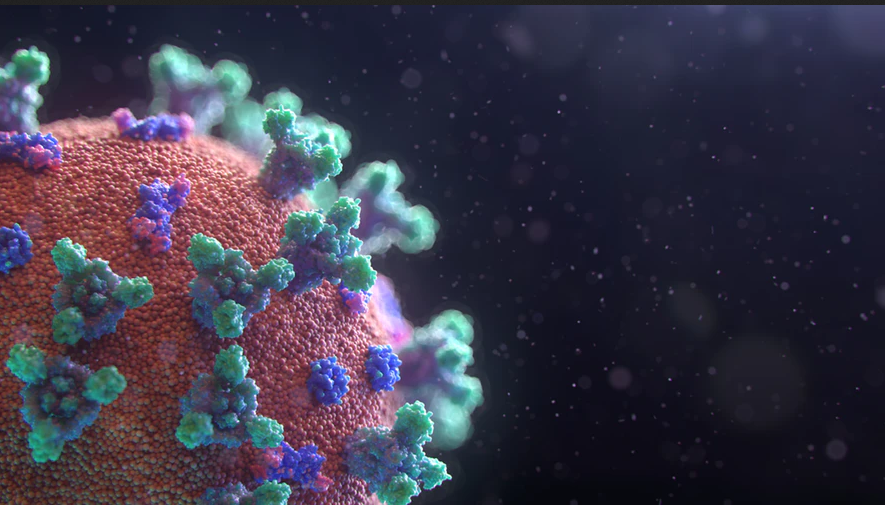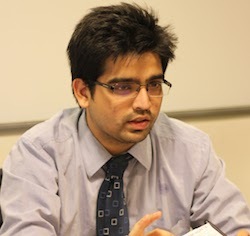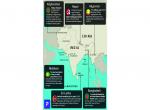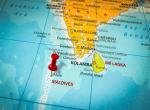The United Nations Security Council, the Premier forum to discuss threats to global peace and security, is yet to discuss COVID-19. An attempt to address the Virus was blocked by China last month while it served as the Chair of the Security Council. As casualties continue to mount, the world faces a dire crisis of this magnitude for the first time since the Second World War. One needs to question the role of the People's Republic of China in international affairs and the heft it carries at multilateral institutions.
Mounting economic losses, democratically elected governments enforcing draconian measures to contain the spread of Virus and the revelation of the dire conditions of health services all around the world, irrespective of a country’s financial standing, has led to multiple questions. Could the virus have been contained? Why did the World Health Organisation not take appropriate steps? How far is China responsible for the spread of the virus?
The Genesis of the "New" Chinese thinking
Mao Zedong, the Chinese Communist Party's immortalised leader, had a rule known as the "Red and Expert"1. The Red and Expert rationale was that politics and technology and, politics and economy go hand in hand. The rule was to ensure that China becomes scientifically and technologically advanced before any developing country, and rival the superpowers at the time. Then came the Cultural Revolution wherein the political side of the rule was given more heft and prioritised, which led to a disaster. One of the casualties (purged and stripped of all leadership roles) of the revolution was Xi Zhongxun, the father of President Xi Jinping, who was accused of gazing at West Berlin through binoculars during a visit to East Germany2. Later, to undo the disaster of the so-called “revolution,” Deng Xiaoping, the paramount leader of China at the time, ushered in political and economic reforms, which charted the course for China to be recognised as a rival power challenging the United States of America.
China's experiments to gain rapid growth and gain the respect of major powers have led to disastrous consequences for the Chinese people starting with the Great Leap Forward, where land distribution led to millions of people perishing to achieve its collectivization effort3. Soon after that, as mentioned earlier, to gain control of the party and overturn public opinion, the Cultural Revolution took shape. Since the end of the revolution, until the 2010s, China recorded unprecedented growth, lifting millions from poverty.4
With its wealth growing and achieving technological breakthroughs, the Communist Party ofChina, in the 21st century, is at the forefront of debates upon what the next century should look like for them, and whether it can lead the way as the West did in the preceding century. A bigger question that arises is whether China can contribute to the liberalised world economy, as it did to help them grow. The expectation from China to have an open, free and transparent society took a backseat when constitutional amendments were made to remove Presidential term limits. Also, it has been asserting itself in the South China Sea and has ignored international court rulings on the same.
To gain the view that China's methods are efficient and effective would not be the correct assessment to make. Its economic development has come at the cost of environmental damage and severely undermining the fight against climate change as it blatantly overlooks international laws and judgments. These transgressions indicate its mismanagement of COVID-19 and the denial of responsibility for the same5.
The Chinese Misdirection
Six months before the constitutional amendments were removed by President Xi Jinping, in his report to the 19th CPC National Congress, he advocated socialism with Chinese characteristics as a new option for developing countries to speed up their modernisation6. The report also encouraged all ethnic groups to work together to achieve "common prosperity for everyone." Since the report came out, the Belt and Road Initiative has faced criticism from member countries and has been accused of creating "debt traps"7. The Uighurs, a minority ethnic group have been forced into detention camps in Xinjiang, and their religious freedom has been curbed.8 Finally, it is locked in a trade conflict with the United States of America.
The first news of the COVID-19 outbreak in China came soon after Phase 1 of the U.S-China trade agreement was signed. The Virus originated from the Huanan Seafood Market in Wuhan. The wet market in Wuhan puts people and live and dead animals like dogs, civets, snakes and more in constant close contact9. The market was shut down on January 1, 2020, which was surprisingly the day after the Wuhan Municipal Health Commission concluded that there was no "obvious" human to human transmission and no medical staff transmission. Whistle-blowers like Dr. Li Wenliang, who warned of the threat posed by the Virus, were issued summons by the Wuhan Public Security Bureau. Later China's National Health Commission directed all research institutions to cease publishing any information on the unknown virus10.
The information blackout by the Chinese authorities on the virus couldn't get the attention it deserved as around the same time, the U.S. conducted drone strikes on one of Iran's top General in Baghdad, Iraq, leading to anxiousness about the possibility of another gulf war.1 China did inform the World Health Organisation about the novel COVID-19 outbreak on December 31, 2020, two days before the U.S strike. It used the traditional art of Chinese stealth diplomacy which flows from its ancient political wisdom to use the opportunity to deflect the accusation of not containing the spread of the virus and hid information about the same. The Chinese authorities' focus was to prove to the international community and its people about the "foreign origin" of the Virus. India has faced this kind of stealth diplomacy in form of Chinese aggression in 1962 when the Cuban Missile Crisis was at its peak; a war that"never happened" for millions of Chinese youth12.
Internationalisation of Political Correctness
The World Health Organisation in recent years has become an important political tool for China to assert its dominance over the international system. It used the WHO to remove Taiwan from the decision making body, World Health Assembly (although it was admitted as Chinese Taipei as an observer), and since 2017 has been against their admission. The same excuse has been used by host of countries after the outbreak to restrict air travel to Taiwan13. The WHO's aim since 1948 has been to work towards ensuring the highest level of health standards of all people. In these times of crisis, China still prioritises its political ambitions over well-being, while the WHO keeps Taiwan out of the fold.
The WHO itself stands to be criticised of showing certain biasedness towards Chinese callousness of handling of the virus. Three days before India reported its first case, the WHO Director-General, Tedros Adhanom Ghebreyesus, met with Chinese Foreign Minister, Wang Yi, and lauded the efforts made by China to prevent and control the epidemic. The preventive measures, as described by the WHO Chief, were "rarely seen in the world" and "admirable"14. The WHO Chief also called upon member states to not limit air travel with China and urged them to avoid "recrimination or politicization" of the outbreak15.
In the UNSC, as mentioned earlier, China has blocked the discussion on COVID-19. One reason could be that it fears its mismanagement would be highlighted. The precedent for discussing epidemics (in this case, pandemic) has already been established when the Security Council discussed the Ebola virus. The discussion went ahead then, as the proposal by the U.S. highlighted that the spread of the virus was aggravating the conflict in West Africa. The international community might have opted not to bring this up at the premier forums as they are dependent on importing necessary medical equipment from China.16
Chinese Public Relations Machinery
By the end of February 2020, the global count of COVID-19 patients stood at around 84,000 in 56 countries. The outbreaks in Iran, Italy, and South Korea had just started. In the final week of February, the Chinese authorities cancelled the National People's Congress. On the same day, Chinese authorities also warned its citizens to avoid travelling to the U.S.citing what they called as excessive preventive measures by the U.S. authorities17. The travel warning prompted the state-led machinery to accuse the U.S. and blame them for the Virus. Party mouthpieces like Global Times have denied the virus originated from Wuhan. A Chinese Foreign Ministry spokesperson posted on Twitter that the Virus was carried by U.S. soldiers travelling to Wuhan in October 2019. China also ordered the expulsion of several American journalists18.
The WHO Chief’s admiration of the Chinese response and its effectiveness was enthusiastically covered by the party mouthpieces. While this was expected from the stated sponsored media outlets in China, the WHO should have been critical of the Chinese responsiveness asits decision-makers instituted a lockdown in Wuhan seven weeks after the outbreak19. The WHO should have factored in a Chinese academic paper in 2019 which claims that a SARS (Severe Acute Respiratory Syndrome) and MERS (Middle East Respiratory Syndrome) like pandemic could occur again, originating from China20. Unfortunately, China was busy stifling whistle-blowers, rather than working towards containing the spread of the Virus21.
Chinese state-controlled media houses have also termed 'Wuhan Virus' as "racist, discriminatory, and distasteful." The Chinese state through its mouthpieces have criticised international newspapers that have come up with headlines tying the Virus with China. However, calling the Virus'Wuhan Virus' is not discriminatory as traditionally global epidemics have been named after their place of origin, like;
- Zika Virus originated from the Zika Forest in Uganda
- Ebola Virus originated from villages near the Ebola River in the Democratic Republic of Congo
- Lyme disease was first diagnosed in Old Lyme, Connecticut. 22
On this issue, the American Council on Science and Health had an appropriate answer to the Chinese authorities and media houses:
"Historically, new infectious diseases are named after places, animals, or people. Today, a flu strain is named after the city in which it's first isolated. That's not because microbiologists are racist."23
Conclusion
The international community needs to work on reforming WHO as suggested by India at G-20 Virtual Summit. The WHO's role needs to be questioned. The reforms have been necessary and other major powers, especially in the United Nations, do not seem interested to make any changes to the premier multilateral health body. The WHO is dependent on budgetary contributions enforced by the way it is structured. Over the last five years, China's contribution has grown by 52 per cent (86 Million USD in 2018-19). The amount is still lower compared to the U.S contributing around 900 million USD in 2018-19. But it is the Trump administration's proposed budget in 2017 to cut 2.2 Billion USD from global health spending which questions the U.S leadership.24
The call for reforms in premier multilateral institutions has been a bone of contention in North-South cooperation. COVID-19 has also exposed the divide in South-South collaboration, as there has been no virtual emergency summit between BRICS (Brazil, Russia, India, China, and South Africa), which represents 43 per cent of the world population. BRICS, which was seen as a grouping to give an alternative perspective to solutions faced by the Western-led globalised world order, seems to have chosen to become a "limited interest group." That could be because China has more political and economic heft than its colleagues in the grouping. The same political and economic heft is also responsible for dereliction of duty by the WHO in handling the outbreak in China and the subsequent failure to contain its spread.
Developing and Least Developed Countries should now look to decouple their economic relations with China along with reconsidering the Chinese model of development as proposed by Xi in 2017. While China claims to provide an alternative form of development, the results of the same and system’s lack of transparency is more evident than ever. Adding dereliction of duty, manipulating facts, and politicising multilateral forums are some of the many downsides of adopting the Chinese development model. It should not be the Chinese way, where brute efficiency undermines ethical legitimacy.
References
- Tse-tung, Mao. Red And Expert, www.marxists.org/reference/archive/mao/selected-works/volume-8/mswv8_04.htm.
- Osnos, Evan, and Jiayang Fan. “The Cost of the Cultural Revolution, Fifty Years Later.” The New Yorker, May 6, 2016. https://www.newyorker.com/news/daily-comment/the-cost-of-the-cultural-revolution-fifty-years-later.
- Griffiths, James. “How the Cultural Revolution Changed China Forever.” CNN. Cable News Network, May 17, 2016. https://edition.cnn.com/2016/05/12/asia/china-cultural-revolution-dikotter/index.html.
- “China Lifts 740 Mln Rural Poor out of Poverty since 1978.” Xinhua, March 9, 2018. http://www.xinhuanet.com/english/2018-09/03/c_137441670.htm.
- Mohanty, Aayush. “Chinas Belt and Road Dilemma: Its Brute Efficiency Contrasted with Ethical Legitimacy.” DailyO. Living Media India Limited, January 23, 2019. https://www.dailyo.in/politics/the-belt-and-road-china-xi-jinping-mao-donald-trump-india/story/1/29057.html.
- Jinping , Xi. “Secure a Decisive Victory in Building a Moderately Prosperous Society in All Respects and Strive for the Great Success of Socialism with Chinese Characteristics for a New Era.” Xinhua, October 17, 2017. http://www.xinhuanet.com/english/download/Xi_Jinping's_report_at_19th_CPC_National_Congress.pdf.
- Chaudhury, Dipanjan Roy. “Xi Jinping's BRI Raises Risk of Debt Trap for 68 Nations: US Experts.” The Economic Times, March 14, 2018. https://economictimes.indiatimes.com/news/international/business/xi-jinpings-bri-raises-risk-of-debt-trap-for-68-nations-us-experts/articleshow/63293814.cms.
- Desai, Suyash. “Xinjiang in Danger of Severe Covid-19 Outbreak.” Asia Times, March 17, 2020. https://asiatimes.com/2020/03/xinjiang-in-danger-of-severe-covid-19-outbreak/
- Woodward, Aylin. “The Outbreaks of Both the Wuhan Coronavirus and SARS Started in Chinese Wet Markets. Photos Show What the Markets Look like.” Business Insider, January 23, 2020. https://www.businessinsider.in/science/news/the-outbreaks-of-both-the-wuhan-coronavirus-and-sars-started-in-chinese-wet-markets-photos-show-what-the-markets-look-like-/articleshow/73535775.cms.
- “A Timeline of How China Misled the World on Coronavirus Outbreak.” Livemint, March 27, 2020. https://www.livemint.com/news/world/a-timeline-of-how-china-misled-the-world-on-coronavirus-outbreak-11585273347248.html.
- Cohen, Zachary, HamdiAlkhshali, and Angela Dewan. “US Drone Strike Ordered by Trump Kills Top Iranian Commander in Baghdad.” CNN. Cable News Network, January 4, 2020. https://edition.cnn.com/2020/01/02/middleeast/baghdad-airport-rockets/index.html.
- Dutta, Prabhash K. “Who Brought on Coronavirus Pandemic? China on Prowl to Deflect Blame.” India Today, April 1, 2020. https://www.indiatoday.in/world/story/who-brought-on-coronavirus-pandemic-china-on-prowl-to-deflect-blame-1661965-2020-04-01?fbclid=IwAR2Vqjpq3HzF1LrtqgqUZmS1AfUsdGNaS4xZThHAVSvidpA2bHIBYFdmT4A.
- Huang, Yanzhong. “Tedros, Taiwan, and Trump: What They Tell Us About China's Growing Clout in Global Health.” Council on Foreign Relations, June 7, 2017. https://www.cfr.org/blog/tedros-taiwan-and-trump-what-they-tell-us-about-chinas-growing-clout-global-health.
- “WHO Chief Confident in Chinas Epidemic Prevention and Control Ability.” Xinhua, January 28, 2020. http://www.xinhuanet.com/english/2020-01/28/c_138739356.htm.
- Schlein, Lisa. “WHO Chief Urges Countries Not to Close Borders to Foreigners From China.” Voice of America, February 3, 2020. https://www.voanews.com/science-health/coronavirus-outbreak/who-chief-urges-countries-not-close-borders-foreigners-china.
- Gupta, Shishir. “UNSC Won't Discuss Covid-19; China Blocks It with Help from Russia, South Africa.” Hindustan Times, March 27, 2020. https://www.hindustantimes.com/world-news/unsc-won-t-discuss-covid-19-china-blocks-it-with-help-from-russia-south-africa/story-qLYgAv6DMtfzPxBaIO2kiO.html.
- Keirnan, Samantha, and Jason Socrates Bandi. “UPDATED: Timeline of the Coronavirus: Think Global Health.” Council on Foreign Relations, n.d. https://www.thinkglobalhealth.org/article/updated-timeline-coronavirus.
- Deb, Sandipan. “Opinion: A Pathogen Causing Havoc Has Revealed the Real Face of China.” Livemint, March 22, 2020. https://www.livemint.com/opinion/columns/opinion-a-pathogen-causing-havoc-has-revealed-the-real-face-of-china-11584893233557.html.
- Hamid, Shadi. “China Is Avoiding Blame by Trolling the World.” The Atlantic. Atlantic Media Company, March 19, 2020. https://www.theatlantic.com/ideas/archive/2020/03/china-trolling-world-and-avoiding-blame/608332/.
- Fan, Yi, Kai Zhao, Zheng-Li Shi, and Peng Zhou. “Bat Coronaviruses in China.” Viruses 11, no. 3 (February 2019): 210. https://doi.org/10.3390/v11030210.
- “Li Wenliang: Coronavirus Kills Chinese Whistleblower Doctor.” BBC News, February 7, 2020. https://www.bbc.com/news/world-asia-china-51403795.
- Schachtel, Jordan. “Calling Coronavirus Wuhan Virus Isnt Racist, but China Wants You to Think It Is.” Washington Examiner, March 9, 2020. https://www.washingtonexaminer.com/opinion/calling-coronavirus-wuhan-virus-isnt-racist-but-china-wants-you-to-think-it-is.
- Ibid
- Collins, Michael. “The WHO and China: Dereliction of Duty.” Council on Foreign Relations, February 27, 2020. https://www.cfr.org/blog/who-and-china-dereliction-duty.
(The paper is the author’s individual scholastic articulation. The author certifies that the article/paper is original in content, unpublished and it has not been submitted for publication/web upload elsewhere, and that the facts and figures quoted are duly referenced, as needed, and are believed to be correct). (The paper does not necessarily represent the organisational stance... More >>
Image Source: https://images.unsplash.com/flagged/photo-1584036561584-b03c19da874c?ixlib=rb-1.2.1&ixid=eyJhcHBfaWQiOjEyMDd9&auto=format&fit=crop&w=889&q=80











Post new comment